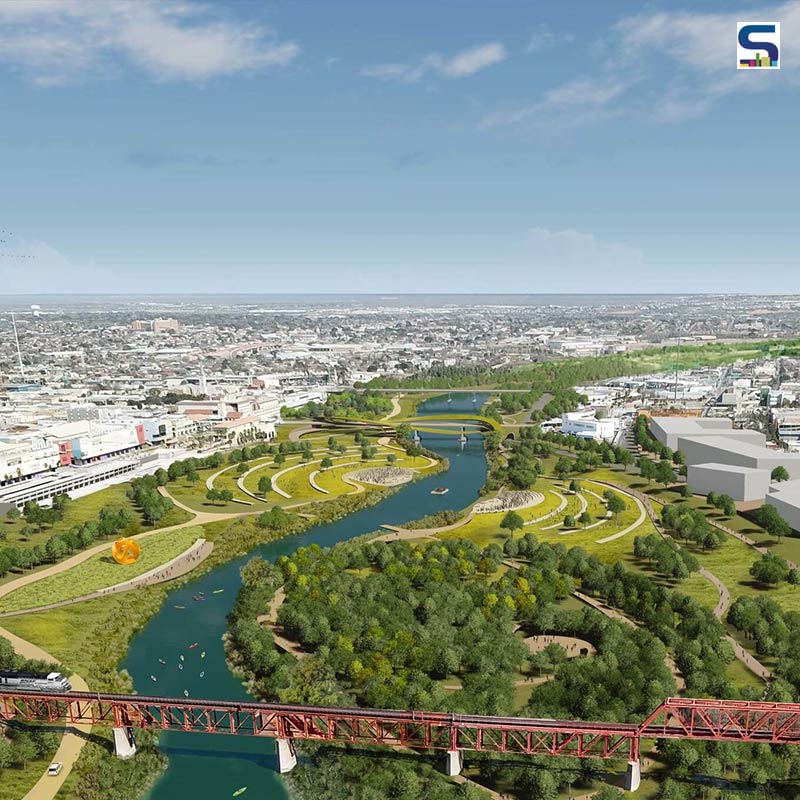
San Antonio-based firm Overland Partners and Laredo’s local architecture studio Able City have recently unveiled plans for a binational border park along the Rio Grande between Mexico and the US. The project – incorporating 6.3 miles of land over a thousand-acre on both sides of the river – aims at connecting the cities of Laredo in Texas and Nuevo Laredo in Mexico. Overland Partners and Able City had been selected during a meeting between officials from both countries to aid tourism, trade and economic growth of the two states on both the sides of the border. Know more about the binational park on SURFACES REPORTER (SR).
Bridging the gap
The cities had reportedly envisioned over 40 individual projects on both sides of the river, which would further lead to the restoration of the site ecology, celebration of their common culture and revitalization of the economy. Running around the theme of culture, security, economy and binational community, the development of the park would include 10 km of land on 400 hectare on both sides of the Rio Bravo.
Laredo was a single city on both sides of the Rio Grande and was separated during the new US-Mexico border. The park will, therefore, be designed to embrace the idea of two cities as one whole community. A binational pedestrian bridge is expected to physically connect the two banks of the river and double as an extension of the park. Visitors from both countries will be able to enjoy a common community space before going through customs.
Three large spaces will constitute the park. Spread across 2.5 mile, the first zone will act as an ecological restoration area. The second stretch will encompass the urban cores along the river that will be framed by bridges and feature an amphitheatre within a radius of a mile. The last stretch of 3 miles will include a recreation area which would further terminate at the Nuevo Laredo Zoo.
An example for others
The binational park aims at creating a positive impact on Laredo and Nuevo Laredo which is certainly promising and unique. The inspirational project can be a role model of how design can be a game-changer for communities around the world. Both the studios hope that the project would further stimulate conversations in border cities around the world.
The park is in the early stages of development. It is estimated to cost $100 million and more, and is, therefore, expecting public and private organization funds and binational government permits.
Image credits: Overland Partners